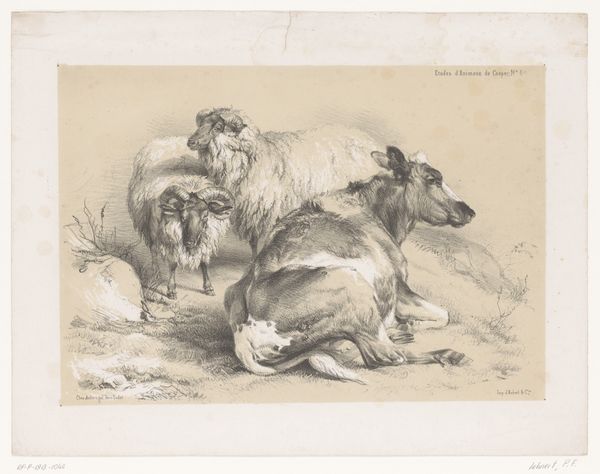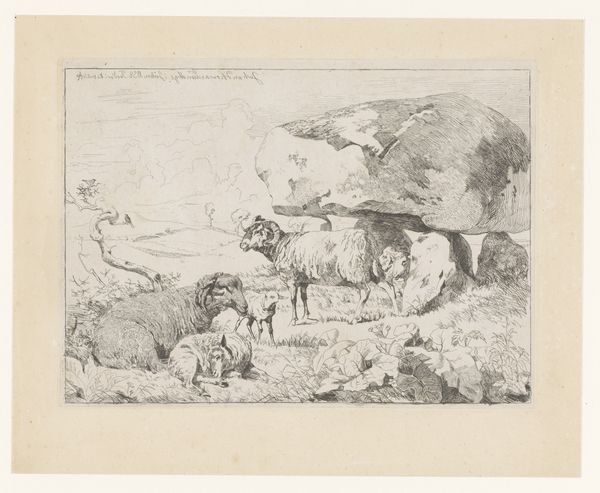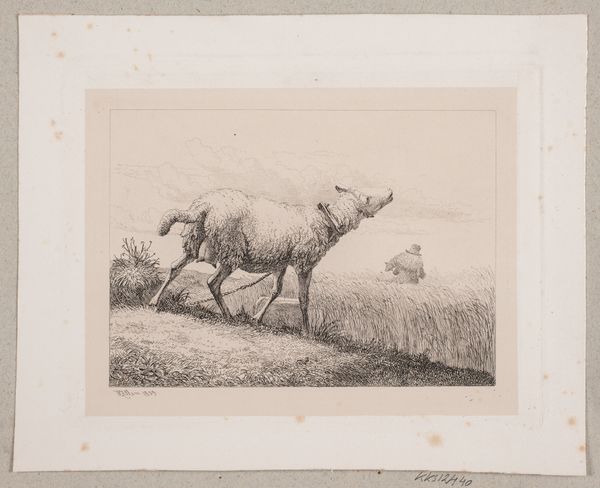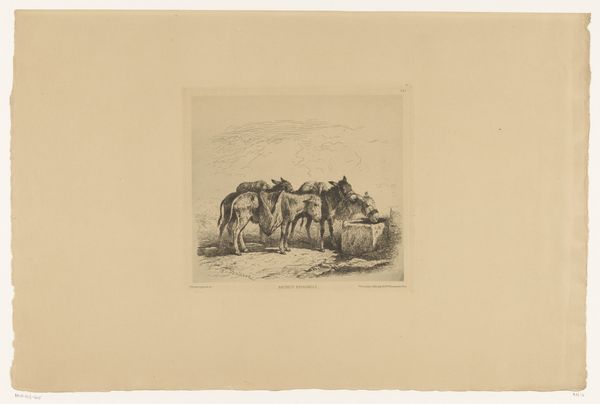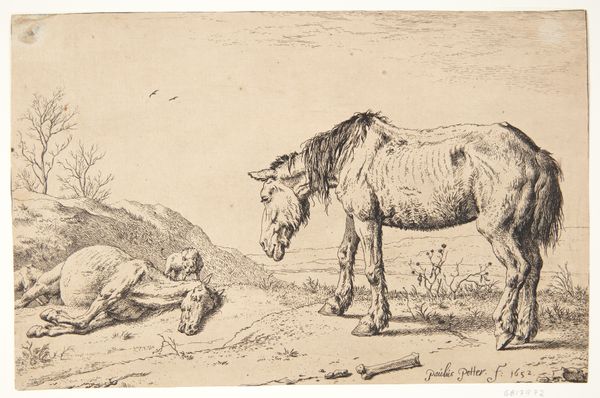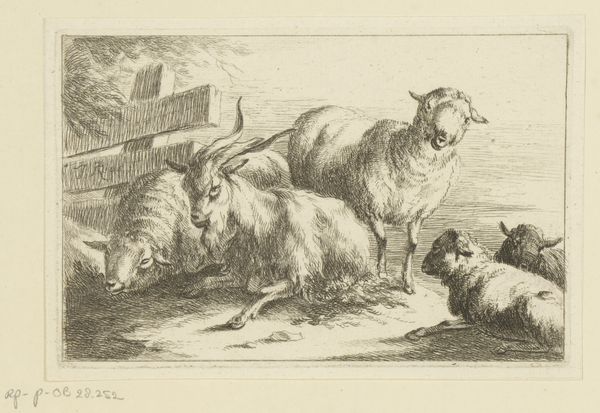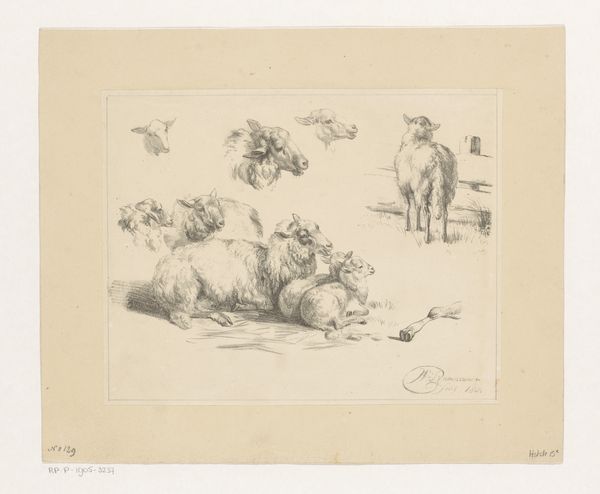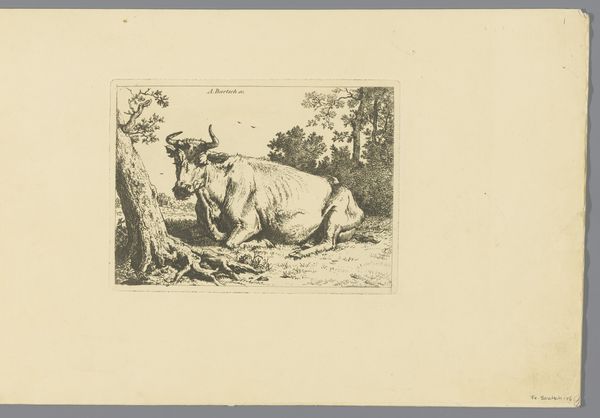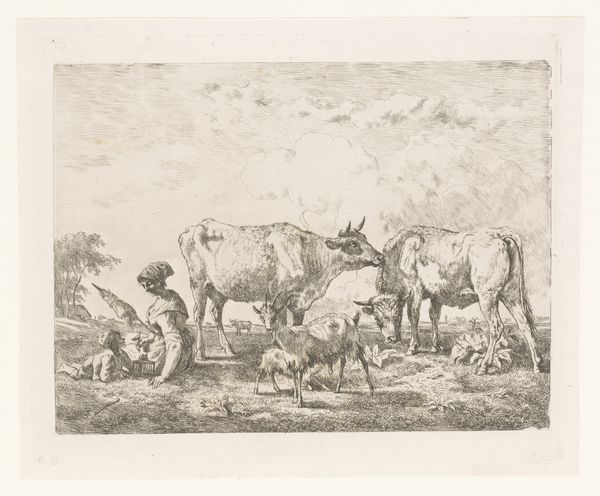
#
aged paper
#
toned paper
#
light pencil work
#
parchment
#
pencil sketch
#
old engraving style
#
personal sketchbook
#
old-timey
#
19th century
#
watercolour illustration
Dimensions: height 221 mm, width 158 mm
Copyright: Rijks Museum: Open Domain
This anonymous print from the Dutch Golden Age, titled "Portret van Maurits, prins van Oranje," captures a flock of rams. Though seemingly a simple animal study, its cultural context reveals a rich layer of meaning. The Netherlands in this era was a burgeoning republic, and the House of Orange, to which Maurits belonged, was central to its identity. These animals, particularly the prominent ram standing tall, become symbols of leadership and strength. The print subtly links Maurits to these attributes, capitalizing on the power of imagery to bolster his image and authority. Consider the function of art within this social context. Prints were a relatively accessible medium, allowing for wide dissemination of political ideas. The Rijksmuseum, as an institution, now plays a role in preserving and interpreting these historical narratives. To fully understand this artwork, delve into the history of the Dutch Republic, the House of Orange, and the role of prints in shaping public opinion. Art, after all, is inseparable from its social and institutional fabric.
Comments
No comments
Be the first to comment and join the conversation on the ultimate creative platform.
